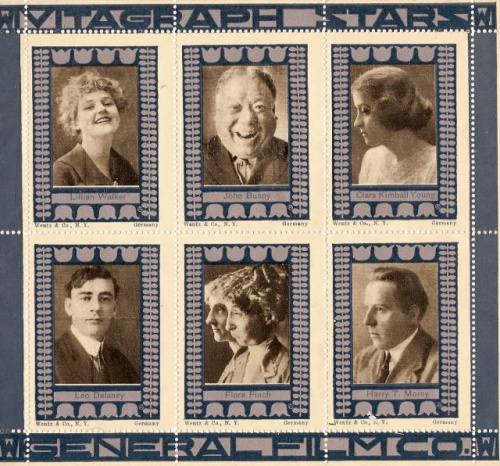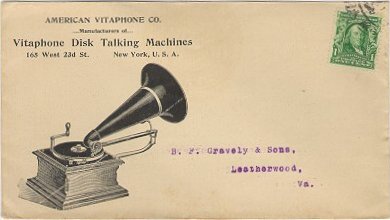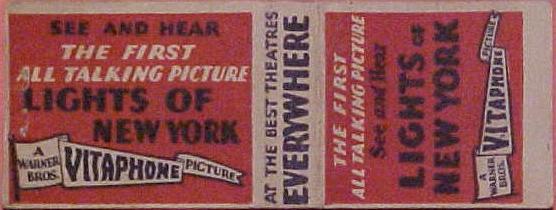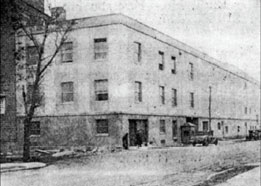From The Peopling of New York City
BEFORE I CONTINUE
I feel, at this point, that I would be remiss in neglecting to discuss Shulamith and Yeshiva University, the two schools that have owned this plot of land over time. Though I feel that Vitagraph has made a tremendous contribution to the movie-going world, I feel that the contribution Shulamith has made is, in a way, greater. The teachers in Shulamith (and YU) are able to mold people, and crank out the world's next doctors, lawyers, and teachers, etc. The people who come out of Shulamith have the power to change the world. Movies, on the other hand have the power to turn your brain to mush (just check out Hulu's Superbowl commercial 2009). While it's true that Vitagraph and the Warner Bros. may have made big impacts on the world we live in today, the two Yeshivos (Jewish schools) have made huge differences in the lives of the many individuals who have attended them, and who still continue to call East 14th street between Locust and Chestnut "home away from home." Personally, I thank Shulamith for being there whenever I needed her (and I still do go there sometimes), and YU for being there for my mother and uncles when they attended high school. It really is amazing that I was able to learn in the same school building my mother learnt in. This is a chain, the chain of education that must get passed on, just as movie production is a chain. It's incredible how both the film industry worldwide, and my family, here in New York have so much to owe to this one building complex. It really makes you think.
And even though the focus of this project is on Vitagraph, I want everyone to be able to appreciate Shulamith the way it is today.
MORE ABOUT THE VITAGRAPH PEOPLE
...The amazing and talented Vitagraph ACTORS...
Vitagraph had many of the generations best actors working in its movies. Here are a few of the all-time favorites.
 [1]
[1]
The following are very brief snippets out of the lives of some very complex people. I encourage you to look them up on your own, you never know, you may find out something interesting!
According to the Flora Finch page on Hollywood.com, Finch, born in June of 1869, was a "skinny, hatchet-faced character actress of the early silent days, Finch co-starred in a series of successful comedies with rotund actor John Bunny."[2] (I guess they were kind of like the olden days version of our Abbot and Costello). They are the two people featured in "A Cure for Pokeritis," which I have posted below.
Finch was born in England, and after spending time on the "legitimate stage," she started making films and became one of the earliest comedians in the silent film era.
Finch died in California at the age of 70, due to a rheumatic fever which resulted from a streptococcus infection.
Brooklyn born, Lillian Walker began her career in 1911 with the Vitagraph Company of America. She, too was frequently cast opposite Jack Bunny. She was most popular in the silent films done in the late teens. After a while, she started starring in her own films until she retired in the 20s. During the 30s she returned to Hollywood for a little while, before retiring and moving to Trinidad, where she lived until her death. [3]. Some of the films she starred in are: Testing His Courage, The Husking Bee, Their Charming Mama, Second Daughter, By Way of Mrs. Browning, A Ballerina, The Wager, and A Tale of Two Cities.[4].
"When John Bunny died the New York Times stated, "The name John Bunny will always be linked to the movies." Little did movie fans of 1915 realize that he would be completely forgotten the next year and completely omitted from many books on silent movies 70-80 years later".[5]
The three hundred pound American born, Brooklyn schooled, actor got into the film business in 1910 and was seen in over 200 comedy shots between then and his death in 1915. Some of the movies he starred in are Train of Incidents, Love, Luck and Gasoline, Bunny's Birthday, Polishing Up, Love's Old Dream, and Bunny and the Bunny Hug. Unfortunately, not very many of those films remain. One of the few we do have is "A Cure for Pokeritis" which is shown below. John Bunny, the man who defined 'adventurist,' died, in his Brooklyn home, of Bright's disease in 1915.
Though Clara Kimball Young claims to be born in Chicago, not everyone is so sure of that. Her parents were traveling stock company actors, and Clara could have been born during any one of their tours. Young started acting at the tender age of three. Vitagraph hired Clara, her husband, and her parents as actors in the early 1900s. Few of her movies survive today. Some of her originals are The Eyes of Youth, The Woman of Bronze, Enter Madame, The Hands of Nara, The Worldly Madonna, What No Man Knows, and Charge It. When Clara Kimball Young took on a contract from a different producer, her image, and her life started going downhill, and "the Roaring Twenties proved her demise." In 1942 she announced her retirement by saying, "I've been working since I was 2 years old, I think I deserve the chance to quit and just enjoy life." She died in 1960 and had several hundred friends attending her funeral. [6]
Harry T. Morey was described as a "rough-and-ready" fighting man. He started working with Vitagraph in 1908. Before becoming a star unto himself in 1918, he co-starred with Alice Joyce (another Vitagraph diamond). His films were "fast paced," and Morey was liked by both the critics and regular viewers. In 1920, Morey left Vitagraph because he wanted to star in his own "production company...specializ[ing] in 'personality stories'."
Some of the movies Morey starred in are
A Million Dollar Bid, Womanhood; the Glory of a Nation, The Gamblers, and The Return of Sherlock Holmes.
[7]
A RICH REVIEW OF WHAT YOU'VE READ
Part 1: This Building in Brief
Around 1907: The Vitagraph Company of America purchases the street in question and turns the farmland into one building complex.
1925: Warner Bros. buy the complex (and the company) and establishes "Vitaphone Co." to experiment with bringing sounds to movies.
1934-1959:Warner Bros. uses the studio for its Ace Field Laboratory.
Early 1960s:Yeshiva University (YU) buys the building.
1965:YU uses the grounds to house a boys high school and a girls one.
1980s:Shulamith School purchases the grounds.
Part 2: A Deeper Discussion
According to ACRIS: The New York City Department of Finance’s Office of the City Register; on February 1, 1982, Yeshiva University sold its property on East 14 Street and Avenue M to Shulamith School for Girls.
Yeshiva University had bought the building in the early 1960s from the Warner Bros. who had purchased it from the The Vitagraph Company of America. As entrepreneurs in their field- the Vitagraph Company turned out to be silent movie experts. They had moved from Manhattan to Brooklyn in 1905, and according to Jenna Weissman Joselit, [8] "Vitagraph was the first of its competitors to erect a full-fledged movie studio, replete with laboratories, dressing rooms, administrative buildings, its very own water tank and a film stage whose newfangled glass roof, modeled after that of a conservatory, was the talk of the town. ”
Some of the major actors that performed for Vitagraph are John Bunny, Flora Finch, Kate Price, and Sydney Drew. Even Esther Williams performed a swimming spectacular on these Vitagraph grounds. Take that Brad Pitt!
The above actors performed in some awesome silent movies like A Tale of Two Cities, A Mid-Winter night’s dream/Little Joe’s Luck, Little Nemo, The Cure for Pokeritis , and A Vitagraph Romance(Sounds like the kinds of things that would sell nowadays. I guess some things just never change). I tried watching some of the clips, and it’s pretty cool how, if you look hard enough, you can even kind of read the actors’ lips. I guess that gave the characters an incentive to actually remember their lines, even though nobody ever really heard them!
("John Bunny and Flora Finch Released February 17, 1912 by Vitagraph Company of America" posted by 'bayougrande')
In 1925, Warner Bros. bought over the Vitagraph Company of America, and with it, this building in Flatbush. There, the Warner Bros. were able to produce many “shorts” (very short movies), and after a while, they were even able to introduce sound!
But as Weissman Joselit continues later, “In the end, Brooklyn was no match for Hollywood.”
In 1957, the movie studio closed, in part, due to the noisy subway and the din of the urban streets.
But in a way, that’s better for me. Because Vitagraph closed, Yeshiva University was able to buy the building and my mother was able to learn in the same school building I’ve had the privilege to spend many years of my life...
PICTURES AND MORE
The Vitagraph Company...the original Brooklyn building.
|
The Famous Smokestack (It, like the rest of the school, used to belong to "Vitagraph"-The silent movie studio!)
|
The back of the famous Vitagraph smokestack. Look closely to see the letters running down the spine.[9]
|
The picture on the left was taken from www.editorsguild.com/.../features_article01.htm
ROLLOVER FOR CAPTIONS
...
So thank you, “gentle reader” for giving me your time
I hope that I’ve been able to help expand your mind.
Who knew that so much history could be housed in one small school?
I didn’t, but then now I do. And THAT’S the part that’s cool!!!!
EXTRA FUN FACTS
Welcome to the section of things I really wanted to include, but couldn't really put anywhere else
Rollover the pictures to see the Captions

The following video does not have much to do with my "street." Rather, it has much to do with Warner Bros. and their invention of the "Vitaphone." Only the first half a minute or so is really relevant to this project, but I couldn't figure out how to cut the 'extra' information. In any event, this video is pretty interesting, so it made it into my Fun Facts section. Enjoy!!
Posted by winstonsmithhbb.
Some people think the Jazz Singer (advertised in the film above) is the first all-talking film. It's Not.

As shown on this matchbox cover, The Lights of New York was the first all-talking film. The Jazz Singer did not feature dialogue, although it did include a sound track with songs.
According to the Animation World Magazine, The Humorous Phases of Funny Faces, "was released... into theaters on April 6, 1906. It was the first true American animated cartoon. It evoked gales of laughter, especially at the scene of the cigar smoker and his girlfriend." [10] Here is a copy of the 'movie' from youtube (posted by godshand). It is one of Stuart Blackton's most famous movies, and was filmed in modern-day Flatbush, on East 14 St. between Locust and Chestnut Avenues!
PAGE 1
I want to learn about the building
The founders, their fun.
I want to read of animation,
Take me back to PAGE ONE
REFERENCES
- ↑ www.silentfilmstillarchive.com/stamps.htm
- ↑ http://www.hollywood.com/celebrity/Flora_Finch/198149
- ↑ http://www.starpulse.com/Actresses/Walker,_Lillian/Biography/
- ↑ http://www.things-and-other-stuff.com/movies/profiles/lillian-walker.html
- ↑ http://www.imdb.com/name/nm0120544/bio
- ↑ http://www.imdb.com/name/nm0949403/bio
- ↑ Slide, Anthony. The Big V, The Scarecrow Press, Inc. Metuchen, N.J. & London. 1987
- ↑ Place and Time: When History Becomes an Asset
Wonders of America.
Published July 03, 2007, issue of July 06, 2007.
http://www.forward.com/articles/11078/
- ↑ http://subway.com.ru/vitagraph
- ↑ http://mag.awn.com/index.php?ltype=all&category2=&sort=date&article_no=2842&page=2
SOURCES I'VE USED (MANY IN PASSING)
Since a lot of the information I got overlapped from multiple sources, here is a general list of some sources I came across in my search for information. Though not all of these sources are quoted, paraphrased, or referenced in this report, all of these resources are places I would recommend you look into for further research on this topic.
And now, in no particular order, I present to you...
The Motion Picture Editors Guild
The New York Sun
Somebody's Research Project
Magictricks.com
Subway.com.ru
Animation World Magazine
Who's Who of Victorian Cinema
Thomas Santorelli
Encyclopedia Britannica
Katz's Film Encyclopedia
Silent Era
America's Story
SCREENonline
The International Movie Database
The Vitaphone Project
Dear Old Hollywood
Urbanography
NitrateVille
Absolute Astronomy.com
The History of Film
Vitagraph
Griffith, Richard. The Talkies, Dover Publications, Inc., New York 1971
Slide, Anthony. The Big V, The Scarecrow Press, Inc. Metuchen, N.J. & London. 1976, 1987
Crafton, Donald. The Talkies: American Cinema's Transition to Sound, Simon and Schuster Macmillan. New York 1997
ACKNOWLEDGEMENTS
Thank you to everyone (and everything) that helped me with this project. The following is an incomplete list.
Thank you to Ron Hutchinson of the "Vitaphone Project" for answering my email promptly and efficiently!
Thank you to Patrick Breen of NBC for sitting with me and telling me what he knew.
Thank you to Google, YouTube, and Wikipedia.
ASKLAR
click me!!!








